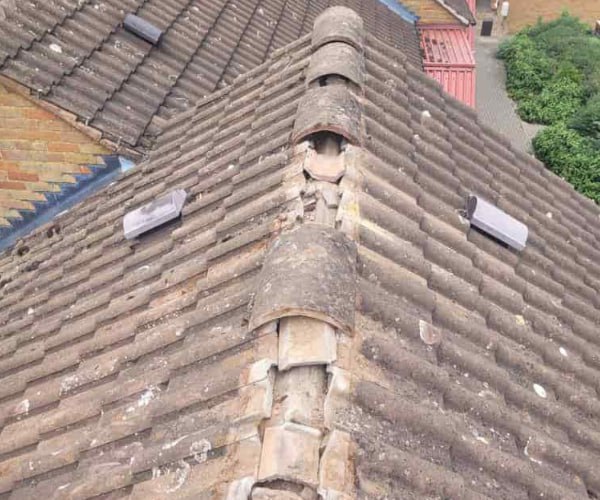Pitched Roof Repairs: How to Ensure Structural Integrity Post-Storm
Pitched roofs are designed to protect your home from the elements, but after a severe storm, even the most well-built roofs can suffer damage. Ensuring the structural integrity of your roof post-storm is crucial for the long-term protection of your property. At SCG Roofing Earls Barton, we specialise in providing expert pitched roof repairs across Earls Barton, Northamptonshire. In this blog, we’ll guide you through how to assess and repair your pitched roof after a storm to ensure it remains structurally sound.
Assessing Your Pitched Roof After a Storm
After any storm, it’s important to inspect your roof for signs of damage, even if you don’t immediately notice leaks or other issues. A thorough assessment can help identify any problems before they escalate, preventing more significant damage to your home.
Here are the key areas to focus on when assessing your roof:
1. Check for Missing or Damaged Tiles
One of the most common types of storm damage to pitched roofs is missing or broken tiles. High winds and heavy rain can dislodge tiles, leaving your roof exposed to water ingress. Even if only a few tiles are missing, it’s important to have them replaced immediately to prevent further damage.
Look for any visible gaps in the roof, as well as cracked or loose tiles. At SCG Roofing Earls Barton, we recommend using binoculars or having a professional inspection to ensure no tile damage is overlooked.
2. Inspect the Roof Ridge
The ridge of a pitched roof is particularly vulnerable to storm damage. The ridge tiles can become loose or displaced during high winds, compromising the roof’s structural integrity. If you notice any movement or gaps in the ridge, it’s crucial to have this repaired promptly to prevent further deterioration.
3. Examine Flashing Around Chimneys and Vents
Flashing is the material used to seal joints around roof features like chimneys, vents, and skylights. During a storm, flashing can become loose or damaged, allowing water to seep into your home. Inspect the flashing for any cracks, gaps, or dislodged sections, and arrange repairs as needed to maintain a watertight seal.
4. Look for Leaks or Water Stains Inside the Home
Even if the roof appears intact from the outside, storm damage can lead to leaks that may not be immediately visible. Check your attic or upper floors for any signs of water ingress, such as damp patches, mould growth, or water stains on the ceiling. These are often early indicators of roof damage that should be addressed before they worsen.
5. Assess Guttering and Downspouts
Heavy rain and debris during a storm can clog or damage gutters and downspouts, preventing proper drainage and potentially leading to water pooling around the roofline. After a storm, ensure that gutters are clear and securely attached, and check for any signs of water overflow that could damage the roof or walls of your home.
Ensuring Structural Integrity Post-Storm
Once the storm has passed and you’ve assessed your roof for damage, the next step is to ensure the structural integrity of your roof through timely repairs. Here’s how to address common storm damage:
1. Tile Replacement
If any tiles are missing or damaged, replacing them quickly is essential to maintaining the roof’s protective barrier. At SCG Roofing Earls Barton, we use high-quality materials that match the existing roof to ensure a seamless repair that restores both the function and appearance of your roof.
2. Ridge Tile Repairs
Ridge tiles play a crucial role in keeping your roof stable and watertight. If your roof ridge has been damaged, we recommend having the tiles re-bedded and re-pointed to prevent further movement. This will ensure the long-term stability of the roof’s structure.
3. Flashing Repairs
Damaged or loose flashing should be repaired or replaced as soon as possible to prevent water from entering your home. Our team of professionals at SCG Roofing Earls Barton can repair flashing around chimneys, vents, and other roof features to restore a watertight seal and protect your property from future leaks.
4. Reinforcing Roof Structure
In some cases, a severe storm can cause damage to the underlying roof structure, especially if water has entered through cracks or gaps. If you suspect structural damage, it’s important to have a professional assess the roof’s framework. Reinforcing or repairing the roof structure can prevent sagging, leaks, and further deterioration.
5. Clearing and Repairing Gutters
Ensuring that your gutters are functioning properly is essential for preventing water damage to the roof and the rest of your home. Clear any debris from gutters and downspouts and repair any sections that have been damaged during the storm. Proper drainage will help protect your roof from future damage caused by water pooling.
Why Choose Professional Roof Repairs
Attempting to repair storm damage on your own can be dangerous, and without proper experience, it’s easy to miss underlying issues that could compromise your roof’s integrity. At SCG Roofing Earls Barton, we offer professional roof repair services to ensure that your pitched roof remains secure and functional after a storm. Our team of skilled roofers is trained to identify hidden damage and provide high-quality repairs that stand the test of time.
Conclusion
Storm damage to pitched roofs can lead to long-term structural problems if not addressed promptly. By conducting a thorough assessment after a storm and ensuring timely repairs, you can maintain the structural integrity of your roof and prevent further damage to your home. At SCG Roofing Earls Barton, we’re committed to helping homeowners in Earls Barton, Northamptonshire, protect their roofs with expert repair services.
Call us on: 01604 261 699
Click here to find out more about SCG Roofing Earls Barton
Click here to complete our contact form and see how we can help with your roofing needs.

